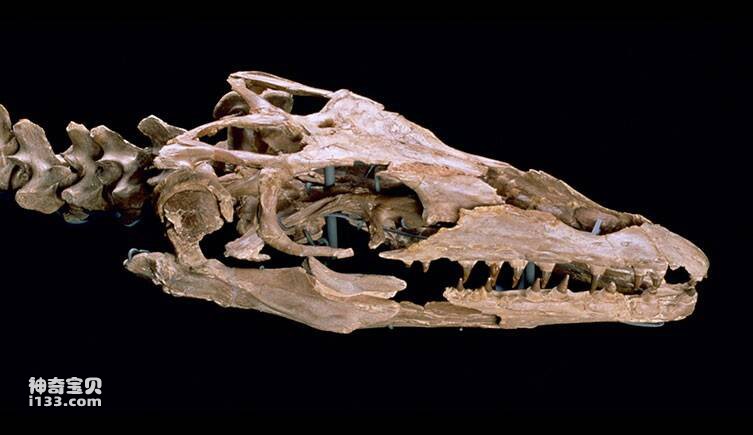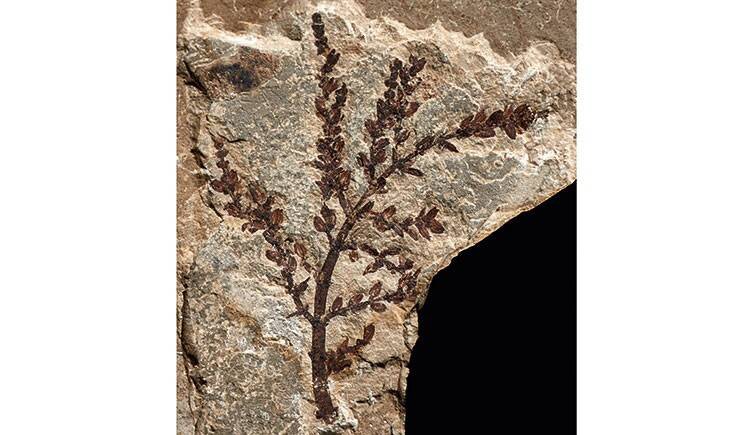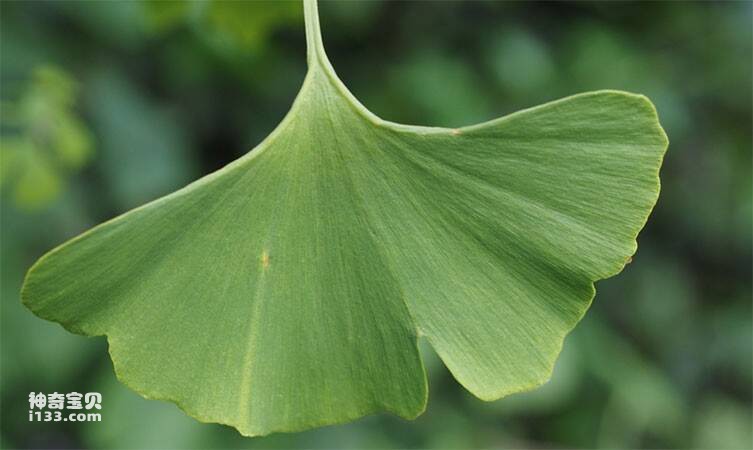The Cretaceous is a geological period that began 145 million years ago and ended 66 million years ago. This is the last period of the Mesozoic Era. It occurred after the Jurassic and before the Paleogene—the first period of the Cenozoic Era, which is our current era.
It lasted a long time, nearly 80 million years, making it the longest geological period of the Phanerozoic, which began about 539 million years ago.
The Cretaceous period is divided into two smaller time periods, called epochs. The Early Cretaceous lasted from 145 million years ago to 100.5 million years ago, and the Late Cretaceous lasted from 100.5 million years ago to 66 million years ago.
1. Cretaceous climate and continents
The continents on our planet once merged into a supercontinent called Pangea. It formed about 335 million years ago, but by the end of the Jurassic Period, this single landmass began to break apart. This situation continued throughout the Cretaceous, and by the end of the Cretaceous, the continents had moved almost to where they are today.
At that time the Earth was much warmer than it is today, and there was almost no ice at the North or South Pole. Sea levels fluctuate but are mostly high. In fact, sea level was sometimes 170 meters higher than today.
Shallow seas formed and separated some continents. For example, during the Late Cretaceous, the Western Interior Seaway divided North America into two continents. This sea is more than 3,000 kilometers long at its maximum, nearly 1,000 kilometers wide, and 760 meters deep.

The skull of an extinct marine reptile called Platycarpus
Platycarpus is a common mosasaur that lives in the Western Interior Seaway. It lived 84-81 million years ago and is thought to have preyed on fish, squid and dynamite.
2. Cretaceous plants
Plant life during the Cretaceous was very different from today. For example, temperate rainforests grew close to the poles, before ice existed there.
Dr Paul Kenrick, an expert on prehistoric plants, explained: "The evidence we have from West Antarctica shows that polar forests were mainly composed of conifers, podocarpus, araucaria and possibly ginkgo trees, with understory Ferns and cycads.”
Unlike the temperate rainforests that exist today in North America's Pacific Northwest, including Oregon and Washington, the Cretaceous polar forests had to spend four months of the year each winter in the complete darkness of the polar night. Plants survive without sunlight for a long time!
Today, about 90% of plants are flowering plants, also called angiosperms. Although the origins of flowering plants date back to the Triassic period, we don't see much evidence of them in the fossil record from the early Cretaceous period. However, by the end of the Cretaceous, angiosperms formed a more important part of plant life on Earth.

Plant fossils embedded in rocks
Monteschia vidalii may be an ancient flowering plant, however, it does not appear to have suitable flowers. One theory is that this Early Cretaceous species lived underwater and therefore had no petals and very few floral organs. This specimen was discovered in Spain and is one of several Monteschia fossils in our paleobotanical collection.
"About 70 percent of today's flowering plants are insect-pollinated," Paul explains.
"In the early Jurassic, insect pollination occurred in gymnosperms [a group of seed-producing plants], but it became larger with flowering plants."
"So, there's a big evolutionary story happening between plants and animals."
3. Cretaceous animals
"During the Cretaceous, all creatures that lived on land longer than one meter were dinosaurs," said paleontologist Dr. Susie Maidment.
"There were some furry little mammals running around under the feet of the dinosaurs, but they were a relatively small component of the ecosystem."
'Birds have evolved and taken to the skies, as well as pterosaurs. In the ocean, you have mosasaurs, which are large marine reptiles, and hordes of plesiosaurs and ichthyosaurs," Susi explained.

A plesiosaur skeleton with a long neck
Elasmosaurus was a North American plesiosaur that lived 80 million years ago. This marine reptile is ten meters long, with its extra-long neck accounting for more than half of it.
When it comes to Cretaceous dinosaurs, we usually think of Triceratops and Tyrannosaurus rex, although these dinosaurs only lived at the end of the Cretaceous period, about 68-66 million years ago.
"The Cretaceous was 80 million years old, so there was a lot of turnover in that time," Susie said.
"The Jurassic ended 145 million years ago and was the time when the Northern Hemisphere really had large dinosaurs. Things like Diplodocus and Stegosaurus. Those seemed to have gone extinct or at least declined in the Early Cretaceous, and they were replaced by the iguanodonts and ceratopsians replaced.
During the Early Cretaceous, iguanodonts were among the first dinosaurs to evolve complex chewing mechanisms, rather than just swallowing food like other reptiles.
During the Late Cretaceous, duck-billed dinosaurs - duck-billed dinosaurs - did something similar, using their hundreds of tiny teeth to grind up large amounts of plant matter. Susie calls them "the cows of the Cretaceous."

Parasaurolophus skull
The hadrosaur Parasaurolophus lived in North America 76-74 million years ago. It has a large crown on its head, which may have been used to make trumpet sounds.
The largest dinosaurs in the Northern Hemisphere lived during the Jurassic Period, while the largest reptiles in the Southern Hemisphere appeared during the Cretaceous Period. In fact, during this period some of the largest land animals that ever existed appeared. The largest of these belonged to a group of sauropod dinosaurs called titanosaurs.
Patagotitan is a 37.5-meter-long giant dragon from Argentina, South America, and may be the largest dragon ever discovered. But it's possible that one day we'll find even bigger dinosaurs.
"I think before Patagotitan, we would have said that dinosaurs were on the edge of physical possibility, and then you found something bigger," Suzy said.
It's unclear why some dinosaurs and pterosaurs, such as Quetzalcoatl, became so large during the Cretaceous period. Some believe it may have something to do with gases in the atmosphere, while others believe an evolutionary arms race between prey and predators may be to blame.
"Large dinosaurs couldn't really run, so they had to protect themselves in other ways. So, the prey got bigger, and then the predators got bigger, and so on," Susie explains.

Two Patagotitan dinosaurs walking across an open landscape
Titanosaur Patagotitan was discovered in Argentina and may have been the largest dinosaur in the world. Come to the museum and see this giant for yourself. ©PaleoEquii (CC BY-SA 4.0) via Wikimedia Commons
4. How did giant dinosaurs affect their environment?
Sauropods may live and travel in groups. But how could the Cretaceous environment support so many giant herbivores?
"We have this mammal-centric view of the world, but sauropods were very different from mammals. I suspect they had a very different metabolism and probably didn't need to eat as much food. They also probably survived on low-quality plants ," Susie said.
"They hatch from eggs a little smaller than a football and can grow into these 60-tonne animals. We can see that they deposit bone tissue very quickly, so they grow very quickly and they probably have to eat Many things to promote their growth.
"It's been proposed that their metabolism changes as they grow. So early on, their metabolism is very fast, and as they get older, their growth slows down, and their metabolism actually slows down.much slower.

Three Alamosaurus dinosaurs walk through the forest. One is being reared for food at the top of a tree. Pterosaurs flew above them.
Alamosaurus is a giant dragon that lived in North America during the late Cretaceous period. It was one of the last dinosaurs besides birds.
Giant sauropods strip cellulose-rich leaves from conifers, which can take a long time to be processed in their digestive systems. They may also have eaten the cones from these trees.
'The cone contains the seeds. They’re different from leaves because they contain starch rather than just fiber, so it’s more cost-effective to eat them,” Paul said.
Herbivory - Plant-eating dinosaurs may also have been ecosystem engineers, meaning they changed the places they lived through their behavior. When these dinosaurs ate plant seeds, they may have passed through their guts and passed out in their poop, which helped spread the seeds to the animals' habitats as they moved around.
"If you think about analogies from the modern world, like Elephants-Are-Endangered.html">elephants, seed dispersal was probably an important function for large dinosaurs," Paul points out.
But was there any way for Cretaceous plants to prevent themselves from becoming dinner for dinosaurs? Paul points out several groups of plants that may do just that!
Of the approximately 370 species of cycads alive today, nearly all are poisonous to most mammals, and only a few primates can digest them. If cycads were this toxic during the Jurassic and Cretaceous periods, this might have been enough to deter dinosaurs from eating them.

Fossil trunk of Bennettitales shrub
During the Mesozoic Era, cycads and Beneditiata were the most diverse. The fossilized trunk of this Bennettitales shrub is more than 50 centimeters long and comes from the Early Cretaceous. It is 144-149 million years old.
Bennettitales are a group of extinct plants that look a lot like cycads.
"The cones of cycads are produced at the top of the plant, whereas in many Bennettitales the cone-like structure is embedded in the trunk," Paul explains.
"It may be that these plants protected their reproductive parts by encasing them in an armor-like trunk, rather than leaving them exposed and vulnerable to dinosaur predation."
Some plants may survive because they are strong. For example, the monkey puzzle tree Araucaria araucana looks almost armor-like, covered in thick, scale-like leaves with sharp edges. This plant belongs to a group that was most diverse during the Jurassic and Cretaceous periods.

Branch of monkey puzzle tree
The monkey puzzle tree is native to Chile and Argentina. It is now commonly grown in British gardens. It is a hardy coniferous tree species whose close relatives lived during the Cretaceous period.
5. Cretaceous Britain
The name Cretaceous comes from the Latin word "creta," which means chalk. It got its name from the massive amounts of chalk that were laid out across Western Europe at that time. The famous White Cliffs of Dover in England are just one of many Late Cretaceous chalk deposits.
Chalk is deposited in marine environments, and the fossils within it can tell us about the creatures that lived in the ocean. But it also means scientists know less about the plants and land animals that lived in Britain at the end of the Cretaceous.
We have a better understanding of what lived on land during the Early Cretaceous, thanks in particular to rocks known as the Wealden Group near Bournemouth in southern England. The area is famous for the sightings of Iguanodon. In fact, Britain is particularly famous for its iguanodonts, with 12 genera from the Early Cretaceous found here.

Mantelisaurus skeleton on display in the museum
Mantellosaurus is an iguanodontosaur that lived 130-120 million years ago. The holotype - the specimen to which all other specimens are compared - was discovered on the Isle of Wight in 1914.
We know from the fossil record that the British landscape during the Cretaceous period was not dense deciduous woodland but featured conifers with understory ferns and cycads.
These landscapes are originally relatively open. Today, large areas of predominantly grass and sparsely wooded areas are known as savannas. During the Cretaceous, open landscapes like this were dominated by ferns rather than grasses.
"We think of ferns as these delicate little things that like moist places, but ferns back then were very robust and lived in semi-arid environments," Paul said.

Baryonyx skeleton
Baryonyx lived in southeastern England during the Early Cretaceous. This carnivorous dinosaur is closely related to Spinosaurus, which some believe may have hunted underwater.
6. How did the Cretaceous period end?
The Cretaceous-Paleogene extinction 66 million years ago is probably the most famous mass extinction event. This was caused by a large asteroid crashing off the coast of Mexico, which dramatically changed the Earth's climate.
"It vaporized carbonate and sulfate rocks, causing acid rain and pumping huge amounts of ash, dust and dirt into the atmosphere, blocking out sunlight. This led to the collapse of the global food chain," Susie explained.
"There will also be heat pulses that cause wildfires—as evidenced by charcoal in the rock record—and huge tsunamis that wash over ocean basins."
Adding insult to injury was the formation of the Deccan Traps, one of the largest volcanic features on Earth. The large amounts of sulfur released cool the atmosphere.
The Cretaceous mass extinction wiped out approximately 65% of all species.

The ancient art of living ammonites
The Cretaceous extinction event wiped out many animals, including ammonoids, shelled cephalopods.
Plants were affected, albeit in a different way than animals.
'With animals, entire groups disappear. And with plants, you're going to see a lot of species go extinct, but you're not going to see entire flora disappear," Paul explains.
"In many ways, plants are more robust and resistant to physical disturbance than animals."
Paul compares this to mowing grass. Even after a plant is cut in half with a lawn mower, it can regenerate, something animals cannot do. In catastrophic situations, plants can regrow from roots, buds, and other parts.
Plants also have the advantage of producing large numbers of seeds, which in some types of plants can survive in the soil for decades until conditions are right for them to begin growing.
Ecological variation within a population can also help cope with disasters.
'You see plants producing big trees and small shrub-like things. Your home may include annuals and long-lived perennials. You may have groups adapted to hot and cold climates in the same household.
"Plants are probably more diverse at the family level than animals, so that's why you don't see a lot of losses in these large groups because some elements of them found a way to survive the extinction."

Fan-shaped green leaves of modern ginkgo tree
Ginkgo is the only remaining member of the Ginkgo order, and its diversity began to decline in the late Cretaceous. Image courtesy of Max Pixel (CC0)
7. What comes after the Cretaceous?
When the Cretaceous and Mesozoic ended 66 million years ago, the Paleogene and Cenozoic began.
During the Paleogene, the continents drifted closer to their current positions, and during the following Neogene, the world became cooler and seasonal effects were more widely felt.
Many modern plants evolved during this period, and grasses began to spread.
In place of pterosaurs, birds became the dominant animals in the sky, and the extinction of non-avian dinosaurs allowed mammals to rapidly diversify and grow.
Although our ancient relatives were still millions of years away, some of the earliest evidence of primate-like mammals comes from the Paleogene.
animal tags:
We created this article in conjunction with AI technology, then made sure it was fact-checked and edited by a Animals Top editor.